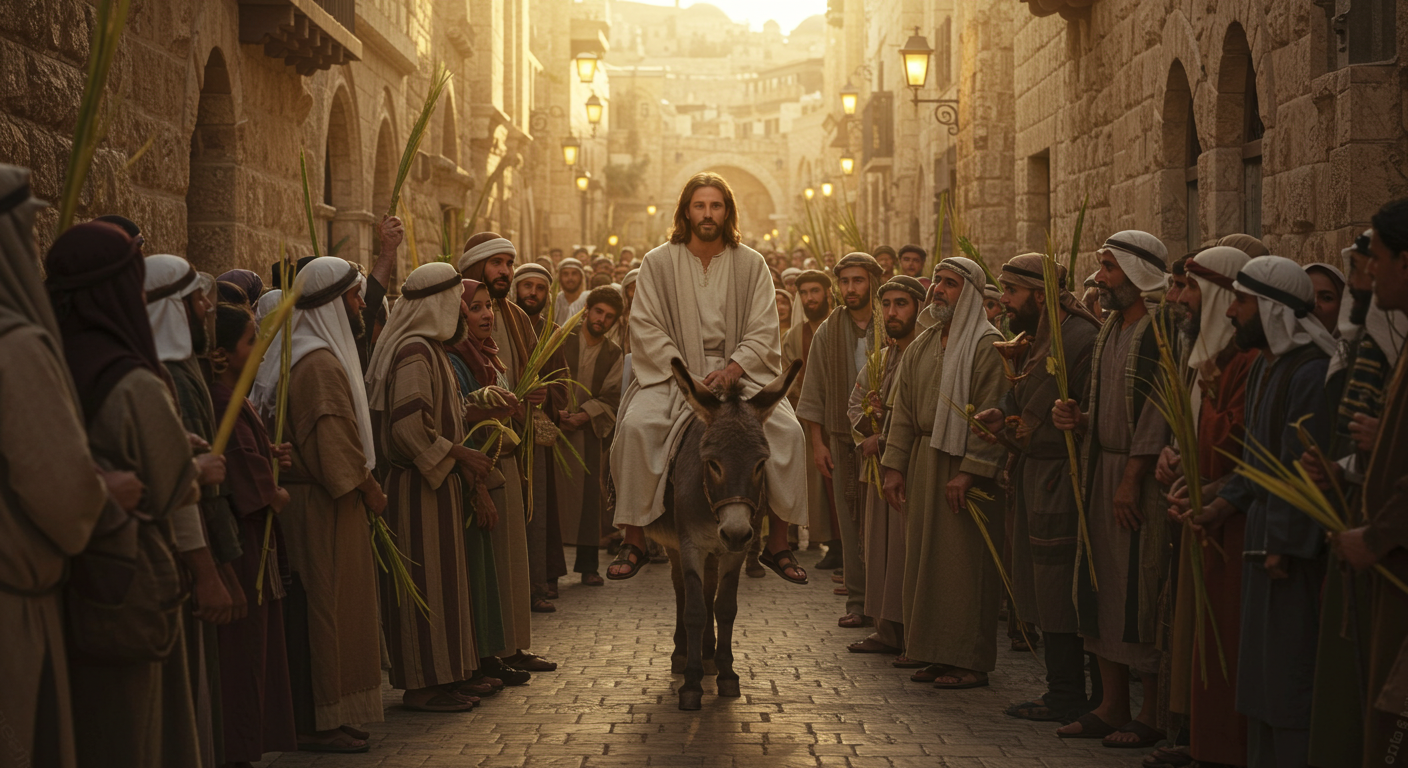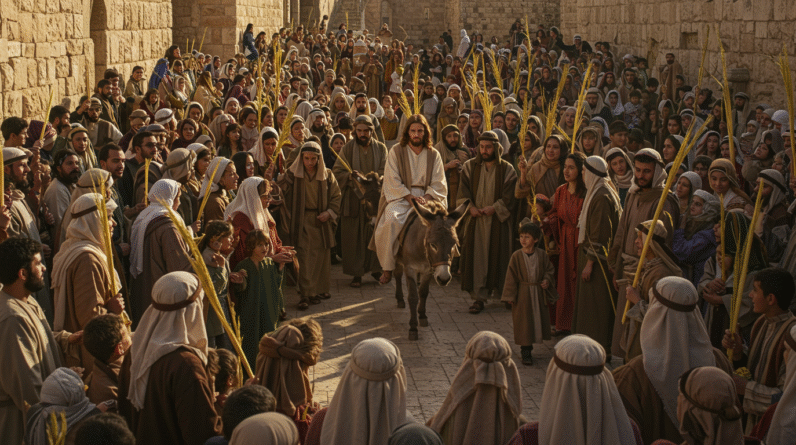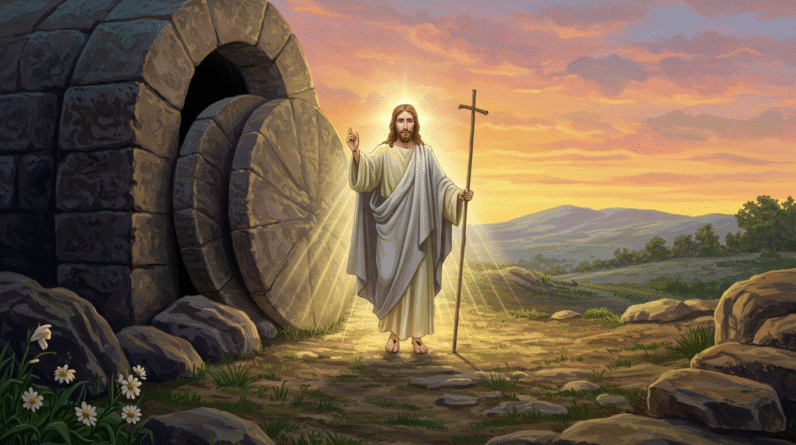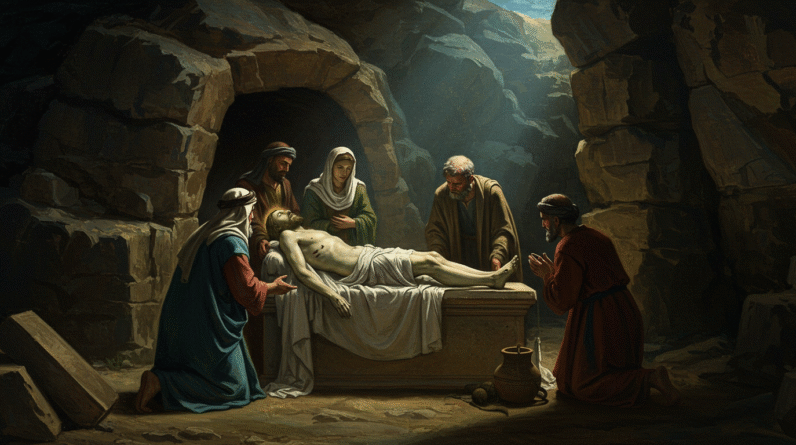Explore the symbolism and meaning behind Palm Sunday. Discover how its themes of hope and humility resonate in Matthew 21:5 and today’s world. Reflect and connect.
🌿Palm Sunday (Matthew 21:5)
Introduction
Welcome to a deep dive into the story of Palm Sunday, a significant event in the Christian calendar that marks the beginning of Holy Week. As we explore Matthew 21:5, you’ll uncover the layers of meaning and the historical context behind this cherished part of the Christian tradition. Grab a cup of tea, settle into a comfy spot, and let’s wander through these ancient paths together.
Palm Sunday celebrates Jesus’s triumphant entry into Jerusalem, setting the stage for the dramatic events of Holy Week leading up to Easter. It’s a day filled with symbolism, hope, and the poignant reminder of Jesus’s mission. As we journey through this article, we’ll weave in the relevance of Palm Sunday in contemporary life and invite you to reflect on its deeper meanings.
Verse Reference
Matthew 21:5 (NIV)
“Say to Daughter Zion, ‘See, your king comes to you, gentle and riding on a donkey, and on a colt, the foal of a donkey.'” Matthew 21:5.
In this verse from the Gospel of Matthew, we witness the powerful image of Jesus entering Jerusalem on a donkey, fulfilling ancient prophecy. Let’s tear down this scene and see how it offers insights into the essence of Palm Sunday.
The Significance of Palm Sunday
Palm Sunday is a time when Christians around the world come together to remember and commemorate the momentous entry of Jesus into Jerusalem. It’s not only a prelude to Easter but also rich with themes that resonate with believers today—humility, peace, and the realization of ancient prophecies.
The Humble King
By choosing to ride into Jerusalem on a donkey, Jesus makes a bold statement about the nature of His kingship. The choice of a donkey, rather than a horse, conveys humility and peace rather than military might. This act challenges the perceptions of power and leadership, offering a counter-narrative to the dominant expectation of a conquering hero. It’s as if Jesus whispers to us through time, inviting us to reconsider our notions of greatness and success.
Fulfillment of Prophecy
Matthew 21:5 is a direct reference to Old Testament prophecies, notably from Zechariah 9:9, where it is foretold that the king would come in peace, riding on a donkey. By linking these prophecies to Jesus’s actions, the Gospel of Matthew invites us to see Jesus not just as a historical figure but as the fulfillment of centuries-old divine promise and longing.
A Prelude to Holy Week
Palm Sunday is the curtain-raiser for Holy Week, a period of intense reflection and devotion in the Christian tradition. From the cheers of “Hosanna” to the solemn unfolding events, Palm Sunday sets the emotional and spiritual tone, guiding worshippers into a week of contemplation and remembrance.
Tradition and Celebration
Global Observance
While the essence of Palm Sunday remains the same worldwide, the ways it is celebrated vary by region and culture. From elaborate processions featuring donkeys and palms to quiet contemplative services, the day’s observance is a tapestry woven from diverse Christian traditions. In some churches, palm branches are distributed and later fashioned into crosses, serving as reminders of the day’s events and its implications throughout the year.
The Role of Palm Branches
Palm branches are not merely decorative; they hold a symbolic significance that echoes through Biblical history. In ancient times, palms represented triumph and victory, elements intricately woven into the story of Jesus’s entry into Jerusalem. In waving palm branches, the crowds acknowledged Jesus as the awaited Messiah, presenting a potent blend of hope and expectation.
Reflection on Palm Sunday
Personal Reflection
Palm Sunday invites each of us into a space of personal reflection. It’s a time to pause and ask ourselves: How do we welcome the teachings of Jesus into our lives today? Are we, like the crowd in Jerusalem, swayed by momentary emotions, or do we seek a deeper, enduring transformation in our spiritual journey? The image of Jesus, calm and humble on a donkey, challenges us to model this same peace and humility in our interactions and daily living.
Contemporary Relevance
In today’s world, where culture often glorifies strength and power, Palm Sunday serves as a counterpoint, calling us back to values of humility and peace. This reminder can be especially poignant in contexts where conflict and division prevail, challenging us to consider ways we can act as peaceful agents, welcoming figurative entries of peace into our communities.
The Narrative of Palm Sunday
Jesus’s Journey
Recounting the journey of Jesus on Palm Sunday isn’t just an exercise in historical recollection. It’s an opportunity to immerse oneself in the narrative, feeling the stones of Jerusalem underfoot and hearing the mixed cries of joy and expectation as the city erupts with excitement. This passage in time is not just about Jesus entering a city but about initiation into the events that would forever alter the trajectory of history.
Crowd Dynamics
The crowd that greeted Jesus played a crucial role in the Palm Sunday narrative. With cries of “Hosanna to the Son of David,” they recognized a king who came in the name of the Lord, filled with aspiration and perhaps misunderstanding. The crowd dynamic introduces a powerful reflection of human nature, illustrating how quickly popular opinion can shift and how public declarations of faith must be rooted deeply to endure.

Unpacking the Imagery in Matthew 21:5
Symbolism of the Donkey
The choice of a donkey is not simply a logistical detail; it’s a profound theological symbol. In these times, a donkey was an animal of peace, contrasting with the warhorse that a military victor might choose. Jesus’s deliberate choice aligns with His mission of peace and reconciliation, painting a picture of a different kind of king—one who reigns from a place of humility and service, not oppression and force.
Daughter Zion
“Daughter Zion” is a poetic reference to the city of Jerusalem and its inhabitants. This phrase evokes deep-rooted Biblical imagery, symbolizing God’s love, care, and promises for the people. It serves as a constant reminder of the ongoing narrative of grace and restoration reaching beyond the temporal moment of Palm Sunday and into eternity.
Engaging with the Significance of Palm Sunday Today
Spiritual Awakening
Palm Sunday remains a powerful call to spiritual awakening. It beckons you to ponder how you live out your faith and embody its teachings in everyday life. As you stand at the threshold of Holy Week, Palm Sunday offers a spiritual mirror, reflecting your assumptions and aspirations and encouraging you to align them with the transformative message of love and humility Jesus exemplified.
Community and Togetherness
While its scriptural roots are profound, Palm Sunday is also a day that underscores the importance of community and togetherness within the church. As palm branches sway in collective harmony, they symbolize unity—a pivotal concept within any faith journey. This unified declaration of “Hosanna!” echoed in churches worldwide becomes a fabric of shared faith, drawing individuals into a network of worship, love, and shared purpose.
Conclusion
Palm Sunday, captured vividly in Matthew 21:5, represents more than just a point on a calendar; it’s a timeless reflection of hope, humility, and the mysterious ways in which God chooses to fulfill promises. It invites you not only to recount an ancient story but to integrate its teachings into the fabric of your life.
As the echoes of “Hosanna!” linger, I hope this exploration has enriched your understanding of Palm Sunday, challenging you to consider both its depth and personal implications.
As a ClickBank Affiliate, I earn from qualifying purchases.
Acknowledgment: All Bible verses referenced in this article were accessed via Bible Gateway (or Bible Hub).
“Want to explore more? Check out our latest post on Why Jesus? and discover the life-changing truth of the Gospel!”








